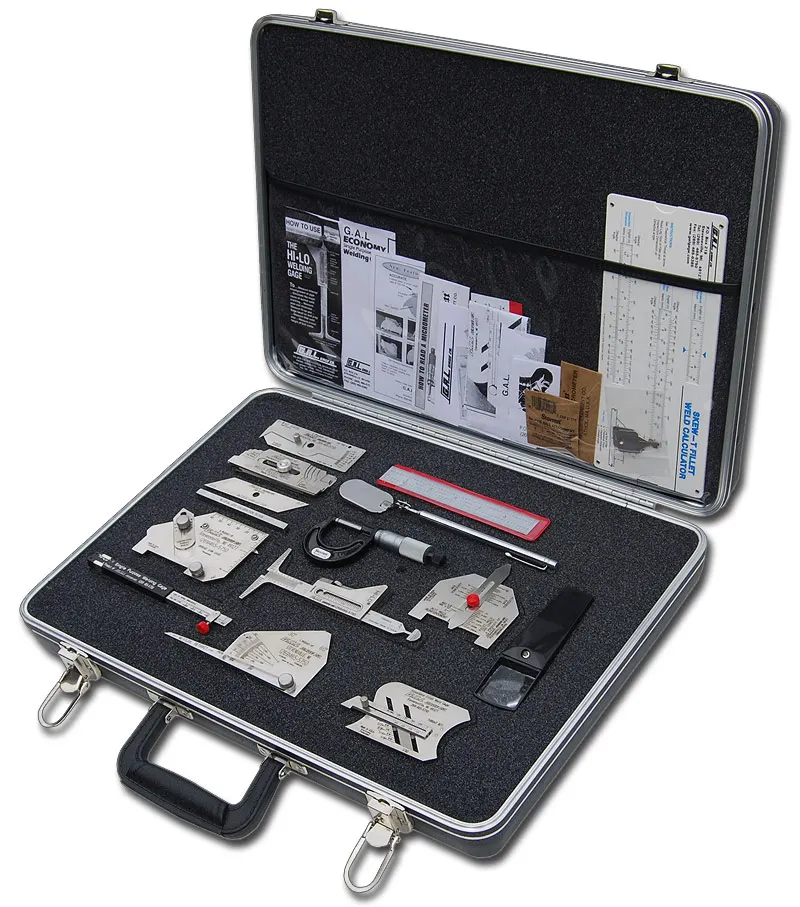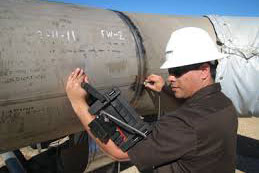Maximize Your Welding Quality with Expert Inspection Services in Gilbert Arizona
Maximize Your Welding Quality with Expert Inspection Services in Gilbert Arizona
Blog Article
A Comprehensive Guide to Welding Assessment: Recognizing Criteria, Techniques, and Finest Practices for Quality Assurance

Welding assessment plays a pivotal duty in making sure the structural honesty and safety of bonded components, requiring a comprehensive understanding of sector standards such as those developed by AWS and ASME. As we explore these essential aspects, it becomes obvious that the implications of welding examination extend much beyond compliance, welcoming a closer exam of how these procedures form industry criteria and practices.
Value of Welding Inspection
Welding evaluation plays a crucial function in making certain the integrity and safety and security of bonded structures. It is a necessary procedure that verifies that welds adapt predefined requirements, which is vital in different markets, consisting of construction, vehicle, and aerospace. By performing extensive examinations, potential problems such as fractures, insufficient fusion, and porosity can be identified early, stopping catastrophic failures that might bring about crashes or costly repair work.
The significance of welding examination expands past plain conformity with laws; it also fosters trust with stakeholders. Clients and regulatory bodies expect assurance that the frameworks they depend on are developed to endure operational tensions. Additionally, effective welding evaluation practices add to long-term resilience and performance of the structures, ultimately bring about lowered upkeep expenses.
In addition, welding assessment promotes a society of high quality within organizations, urging adherence to finest practices and continuous renovation. By integrating inspection procedures into the welding workflow, companies can boost their track record and establish themselves as leaders in top quality guarantee. To conclude, the significance of welding examination hinges on its ability to protect lives, make certain structural reliability, and copyright sector standards, making it an essential element of welding operations.
Key Sector Criteria
Ensuring conformity with key sector criteria is essential for keeping the high quality and security of welded frameworks. Various organizations develop these requirements to advertise best techniques in welding and examination. Among the most identified are the American Welding Culture (AWS) and the American Culture of Mechanical Designers (ASME), which provide thorough guidelines and specs for welding processes and evaluation standards.
AWS requirements, such as AWS D1.1 for architectural welding, outline needs for materials, layout, and screening to make certain the integrity of welds. ASME codes, including ASME Section IX, regulate the credentials of welders and welding treatments, guaranteeing regular quality in commercial applications. Globally, the ISO 3834 conventional stresses top quality requirements for combination welding, supplying a framework for companies to demonstrate conformity with worldwide best techniques.
Conformity with these criteria not just boosts the reliability of welded structures yet likewise alleviates dangers related to structural failings. In addition, adherence to market criteria is typically a requirement for governing approvals and can significantly affect job requirements. Eventually, understanding and applying these crucial standards are vital for effective welding examination and high quality guarantee.
Examination Techniques Overview
Effective welding evaluation depends on a selection of techniques developed to evaluate the top quality and integrity of welds. These strategies can be generally categorized into harmful and non-destructive screening (NDT) approaches. Non-destructive screening strategies, which are extensively favored in the sector, permit the examination of welds without compromising the stability of the material.
Among the most generally utilized NDT techniques are aesthetic evaluation, ultrasonic testing, radiographic testing, and magnetic fragment testing. Visual assessment is usually the first step in the examination process, enabling inspectors to recognize surface flaws and assess weld grain profiles. Ultrasonic screening uses high-frequency audio waves to spot inner flaws and measure the thickness of welds. Radiographic testing includes the use of X-ray or gamma-ray imaging to disclose interior flaws, while magnetic particle screening is effective for identifying surface area and near-surface interruptions in ferromagnetic products.
Each technique has its own advantages and restrictions, making it necessary for inspectors to select one of the most suitable method based upon the certain demands of the project, the products involved, and the urgency of the welds being inspected. This careful selection promotes and ensures detailed analyses security and top Source quality standards in welding procedures.

Common Defects and Their Effects
A complete understanding of typical flaws in welds is critical for maintaining architectural integrity and safety and security in welded building and constructions. Welding issues can substantially jeopardize the mechanical properties of the joint, causing failures that can endanger both personnel and tools.
Typical flaws include porosity, which shows up as tiny gas pockets caught in the weld steel, weakening the overall framework. Fracturing is one more common concern, i loved this commonly arising from quick cooling or inappropriate joint design, causing anxiety focus that can cause disastrous failures. Insufficient fusion happens when the weld steel falls short to effectively bond with the base product, producing powerlessness that might lead to separation under load.
Various other notable defects consist of undercutting, where the weld bead deteriorates the base metal, and slag inclusions, which can prevent the weld's stamina. Each of these problems has details ramifications; for example, porosity can minimize ductility, while splitting straight impacts tensile toughness. Determining and comprehending these issues during examination is essential for executing rehabilitative measures and making certain conformity with market criteria, eventually safeguarding the architectural integrity of welded settings up.
Finest Practices for High Quality Guarantee
Applying ideal methods for quality control in welding procedures is necessary for achieving optimal results and lessening issues. One crucial technique is the establishment of clear welding procedures that stick to market criteria and specs. These treatments should consist of in-depth directions pertaining to material choice, joint preparation, and welding methods to ensure uniformity and high quality.
Regular training and qualification of welding personnel are likewise important. Competent welders that comprehend the relevance of quality control are more probable to produce audio welds. Additionally, carrying out a robust assessment program, consisting of both visual and non-destructive testing (NDT), can assist identify problems early at the same time, enabling prompt rehabilitative actions.
Documents plays a vital role in quality control. Keeping precise records of welding parameters, assessments, and fixings makes sure traceability and accountability. Employing sophisticated technologies such as automated welding devices can enhance precision and reduce the possibility for human mistake.
Last but not least, cultivating a society of high quality within the organization urges employees to focus on high quality in their job. visit here By sticking to these finest techniques, organizations can boost the integrity of their welding processes, eventually leading to enhanced product top quality and minimized prices related to rework and repair services.

Conclusion
In verdict, welding inspection plays an essential role in making sure the honesty and safety of bonded structures. By implementing finest methods, companies can improve integrity, minimize maintenance expenses, and grow trust fund amongst clients, eventually contributing to successful welding procedures.
Furthermore, welding evaluation promotes a culture of top quality within companies, encouraging adherence to ideal practices and continuous renovation. In verdict, the importance of welding inspection exists in its capability to guard lives, guarantee architectural dependability, and maintain sector requirements, making it a crucial facet of welding procedures.
Among the most acknowledged are the American Welding Society (AWS) and the American Culture of Mechanical Engineers (ASME), which offer thorough standards and requirements for welding procedures and evaluation standards.
Eventually, understanding and executing these crucial requirements are important for effective welding evaluation and quality guarantee.
Efficient welding examination counts on a range of methods designed to analyze the high quality and integrity of welds. - Welding Inspection Gilbert Arizona
Report this page